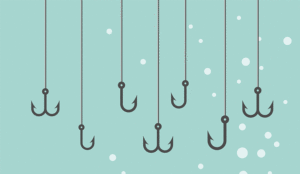We’ve had customer satisfaction scores. Then along came NetPromoter and more recently customer effort scores. All of these claim to be the only measurement that you need to use.
But can a single measurement give the full picture? Peter Massey gives his opinions of customer measurement.
You’ve got to love the phrase ‘customer measurement’. 6ft tall? It’s a nonsensical phrase.
Why are companies obsessed with measuring customers? Is it because they can’t handle feedback unless it’s got a number on it?
I’m a customer and if you try and measure me, I won’t thank you. You put me to the effort of using your service and now you want to put me to the effort of scoring you on the way you handled me.
At that touch point only? Why would I think that way? Why do you think that way? Why do you think I’ll tell you what I think anyway?
And yet scoring abounds. Customer satisfaction scores are still in the majority, Netpromoter scores (NPS) are the fashion and customer effort scores are the new kid on the block.
The thing that sums up the problem of customer measurement for me is this: I ask audiences how many use NPS (would you recommend us…) – maybe 40-60% depending on the audience.
Keep your hand up if you have a word-of-mouth recommendation strategy – only 1 ever did.
Ok, more do in practice, e.g. Porsche, first direct etc. And many have word-of-mouth strategies under another name – ‘social media marketing’. But it’s completely disconnected thinking despite the measure being about “would you recommend?”
Ask your friends
Yet customers have always had one main strategy when it comes to buying – ask your friends.
And now we have the whizzy internet to help us do it in droves. In the future we’ll have really sexy tools once marketing power really inverts and customers sell their data or use it to receive bids from ‘suppliers’ who want to sell us stuff.
Take a look at the white paper ‘Better choices, better deals’ to get a hint of where things are heading.
I want growth vs I want measurement
So let’s try and get some ducks in a row.
The boss wants growth and growth only comes from customers. Customers know good from bad and tell each other, whether you like it or not. You can help them tell each other but you can’t stop them.
Measuring customers is only to help inform you what to do. Talking to customers informs you what to do too. Front-line staff talk to customers all day. Managers need to learn from their front line rather than pay people to measure customers.
Nobody ever acts on the comments on feedback forms
Take a few examples of why customer measurement can be misleading anyway:
1. Postcard from Mini through the post with a clock on the front saying “We know your time is important (…and we want some of it to score us)”.
I’m fed up of being asked for feedback by all sorts of companies that never listen anyway. Or give a bland number on a scale that means nothing. Or I might go to the effort of exercising my frustration by writing what I think in the comments box, which they won’t read, let alone act on. I know because I always put a question and a contact number/email on and no one ever calls.
2. Checking out from the Hilton at the NEC,they asked me if everything was ok, and I said I wouldn’t be using Costa or Hilton again as long as I could avoid them. Because over £10 for 2 Costa coffees (c. £5 normally) was daylight robbery and shouldn’t be allowed. She sympathised: “We get a lot of complaints about that.” As I left she said, “Have a good day and see you again soon.” Listening? Not.
So the scores are delusional, the feedback requests do more damage and feedback is ignored. It’s good stuff this customer measurement!
OK, ok – so there are counter arguments from the business’s point of view?
So what does good look like in customer management?
I’m a believer in ‘imbalanced score cards’. In systems thinking, balance doesn’t lead to growth, lack of balance does. What that means in practice is driving a killer metric that causes a virtuous circle. Driving that as the key focus, not driving all metrics equally, which, after all, that can confuse people.
Not letting the other measures fall below a certain level, or building them in as non-negotiables, e.g. as values, is still important. But think of them as consequences or step values, not drivers.
For example, take a typical balanced score card of customer, people, financials – each area with its measures. I can drive any one of them as long as I know their interrelationship. The interrelationship is the key – the way I run my business.
If I drive costs as a key then I need to relate it to impact on people and customers. If I drive customers first then I need to relate it to financials – something many companies struggle with.

Peter Massey
For example, Amazon always drives to be the lowest-cost provider because it benefits the customer, so the links are a) to reduce costs through reducing customer effort measured by a killer metric CpX and b) to pass the cost saving on to the customer so that Amazon is always best priced and increases revenues accordingly. The minimum ‘bar’ in people is set in their values and how they treat people – it’s not a measure, it’s a pass/fail test.
So what should I do about customer measurement?
In summary, does this make sense as an approach to getting your ‘customer management’ where you want it?
- Understand the virtuous circle in your business/industry
- Choose which lever to drive (because of who you are, what you stand for, your purpose and why your customers need you) and pick a killer metric to drive accordingly
- Understand the linkages to the other elements in your business and make sure your other metrics or values take care of the rest
- Remove distractions internally, wrong objectives, wrong measures, anything that is conflicting with common sense
- Get some feedback in from customers to be sure you know what you’re doing is working (and to identify ongoing distractions to remove)
- Remove unnecessary customer effort and distractions
- Focus on these basics relentlessly over many many years (as do Amazon, first direct, etc.)
Peter Massey is MD of customer experience consultancy Budd www.budd.uk.com
Share your thoughts on customer measurement ..
Author: Jo Robinson
Published On: 24th May 2011 - Last modified: 15th Aug 2025
Read more about - Customer Service Strategy, Customer Effort, Customer Experience (CX), Metrics, Monitoring, Peter Massey, Service Strategy









































Peter, you are absolutely right! front line staff get feedback from customers instantly whilst they’re providing the service (both on the phone and face to face). it is then in my opinion that the job of the manager is to understand when they’re providing it right and when they’re not from the customer’s perspective. using that knowledge to understand predictability and get rid of root cause of problems and so on. it is much more effective than sending out surveys to customers. thanks for the post.